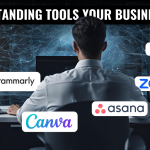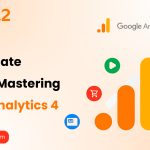Struggling to create perfect social media marketing campaigns? Please read our guide, which will help you get started and give you a perspective on which campaign will work best for you!
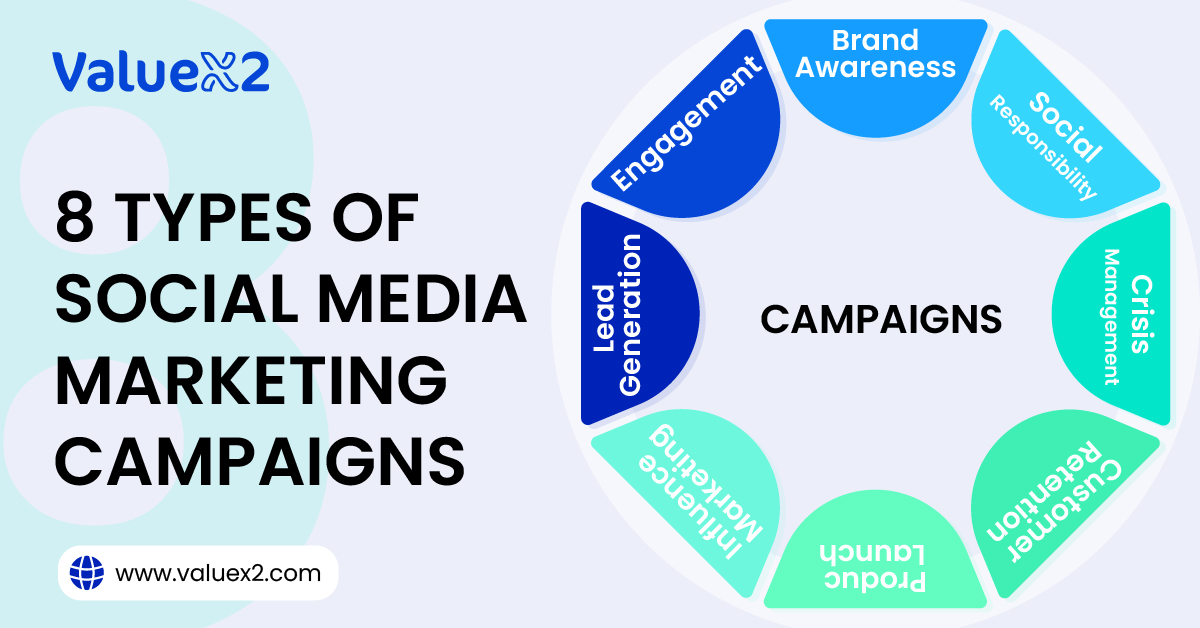
Introduction
Social media is not just a place to share trending memes or chat with friends. In digital times, like today, many Agile businesses leverage it to scale up their practices. Social media marketing campaigns are the best way to go if you want to take advantage of social media. These are smart, planned efforts to promote your brand, connect with your audience, or boost sales using platforms like Instagram, Twitter, or LinkedIn.
The solution to your questions about starting is here! The following blog has eight successful social media marketing campaigns supported by practical examples to generate new ideas. Let’s get into it!
Why Social Media Marketing Campaigns Are Important
Social media marketing campaigns are for businesses of all sizes. They help a business through brand awareness, driving more engagement, generating leads, and helping with sales. Facebook, Twitter, Instagram, etc. platforms are crawling with users, which are the target audience of these businesses. So they can access and pitch their brand to the target audience easily.
But why do these campaigns matter so much? Let us understand:
- Increased Brand Visibility – Regular campaigning helps make sure that your target audience and potential customers get all the new updates about your brand.
- Better Customer Engagement – Interactive content drives customer engagement. It helps build better relationships with the consumers.
- Higher Conversion Rates – Well-planned campaigns turn followers into paying customers.
- Cost-Effective Marketing – Compared to traditional advertising, social media is more affordable.
- Real-Time Feedback – Brands can quickly adjust their strategies based on customer reactions.
- Stronger Customer Loyalty – Engaging content and personalized offers keep customers coming back.
Check out: Agility in Marketing (ICP-MKG) Training and Certification
8 Types of Social Media Marketing Campaigns
1. Brand Awareness Campaigns
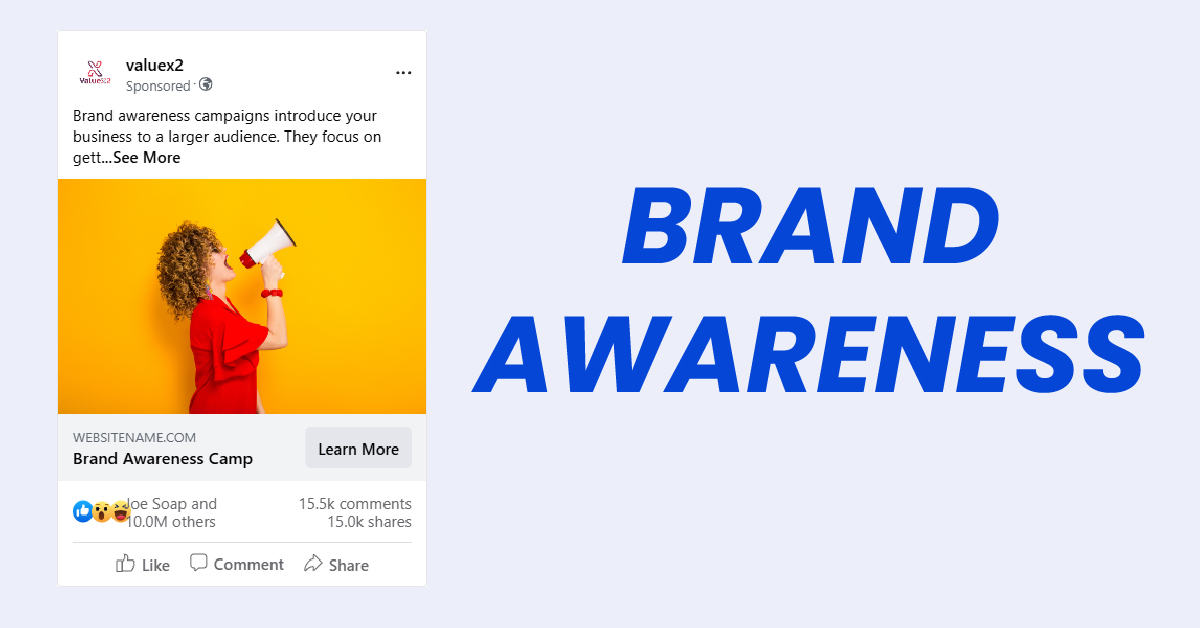
Goal: Let more people know about your brand and enhance your content’s visibility.
As the name suggests, businesses start brand awareness campaigns to increase their brands’ visibility. It focuses on introducing your brand to potential customers. They focus on getting more people to recognize your name, logo, and values. These campaigns work well for new brands, product launches, or companies looking to stay relevant.
Example: Nike’s “Just Do It” Campaign
You must have heard Nike’s famous slogan, “Just Do It”. But did you know that it is more than just a tagline? In their social media ads, they feature real athletes, send inspirational messages, etc. This approach helps people to connect more with the brand, making it memorable.
How to Run a Brand Awareness Campaign
- You should include high-quality visuals. Using attractive images can guarantee more attention from consumers.
- Take advantage of popular influencers. Talk to these influencers and ask them to collaborate with your brand by putting up a story or a post. This can help gather attention towards your brand.
- Use relevant hashtags. Popular or trending hashtags on any social media platform, when used in your post, can help your content reach more people.
- Conduct some paid promotions. It can help in expanding your reach more quickly.
Best Platforms: Instagram, Facebook, LinkedIn, Twitter
2. Engagement Campaigns
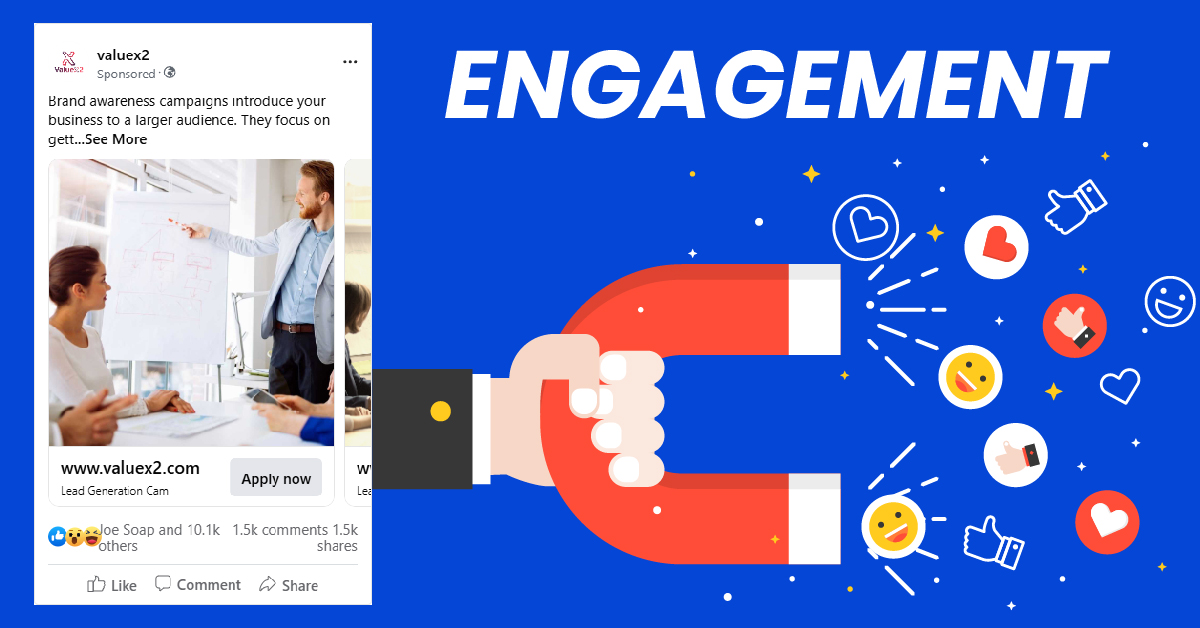
Goal: Increase the number of likes, comments, and social media shares throughout the platforms.
Engagement campaigns help users engage with your content. It also helps in enhancing brand visibility. These campaigns make it easier for the user to relate to your brand.
Example: Starbucks’ Red Cup Contest
Starbucks announces the #RedCup Contest every year. Many customers participate in this contest. They share their photos on their Starbucks holiday-themed cup. Starbucks picks out the most impressive pictures and posts them on its social media page. This campaign drives highly successful user engagement and free promotion.
How to Run an Engagement Campaign
- You can initiate a contest or giveaway. People love free stuff. Ask them to like, comment, or share to participate.
- Create interactive content – Polls, quizzes, and “this-or-that” posts increase engagement.
- You should request people to provide pictures of them using your products through social media platforms.
- You should engage with your audience. Respond to their messages that appear on your social media pages.
Best Platforms: Instagram, Facebook, TikTok, Twitter
3. Lead Generation Campaigns
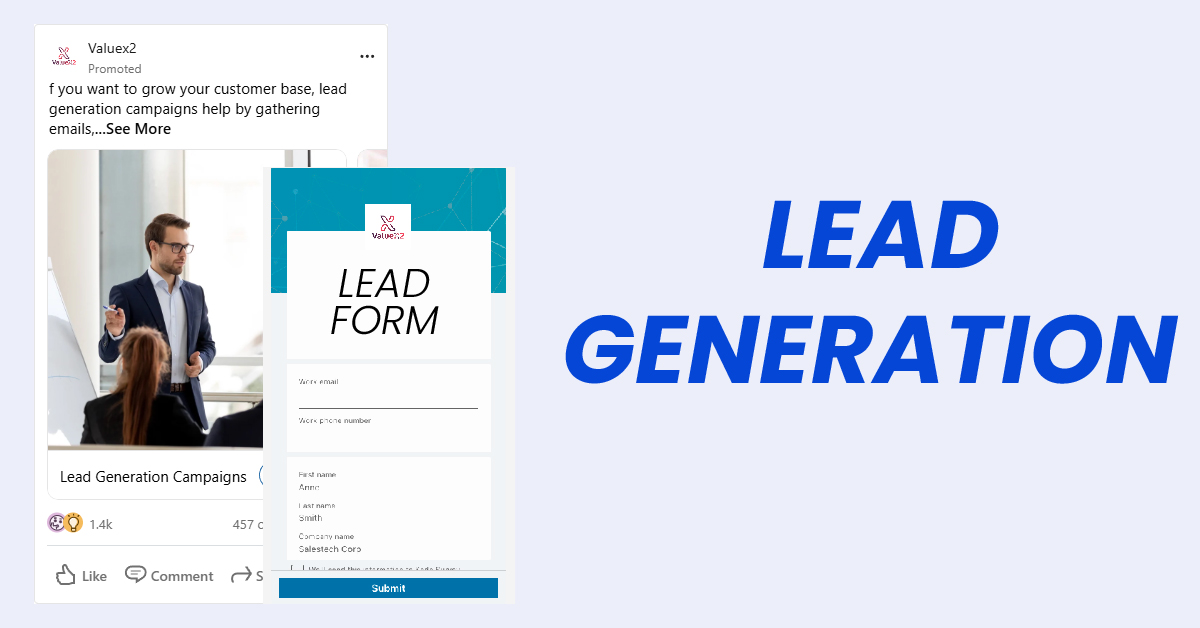
Goal: Collect potential customers’ contact details.
Lead generation campaigns help in expanding your customer base by collecting information like email addresses or phone numbers and some extra details. Businesses motivate customers through free offers, discounts, and unique content for exclusive use.
Example: HubSpot’s Free E-Books
HubSpot delivers complimentary marketing and business e-books as a reward for new users who subscribe to their email lists. Through this strategy, the business acquires emails from prospective customers as contact information.
How to Run a Lead Generation Campaign
- To earn sign-ups, offer a mentionable freebie that includes e-books, discounts, and exclusive access.
- Social media ads help attract and target the exact audience segment.
- Develop a landing page that offers users simplicity during sign-up procedures.
- Use strong calls to action (CTAs). Motivate your users to “Download Now” or “Sign Up for Free.”
Best Platforms: Facebook, LinkedIn, Instagram
4. Influencer Marketing Campaigns
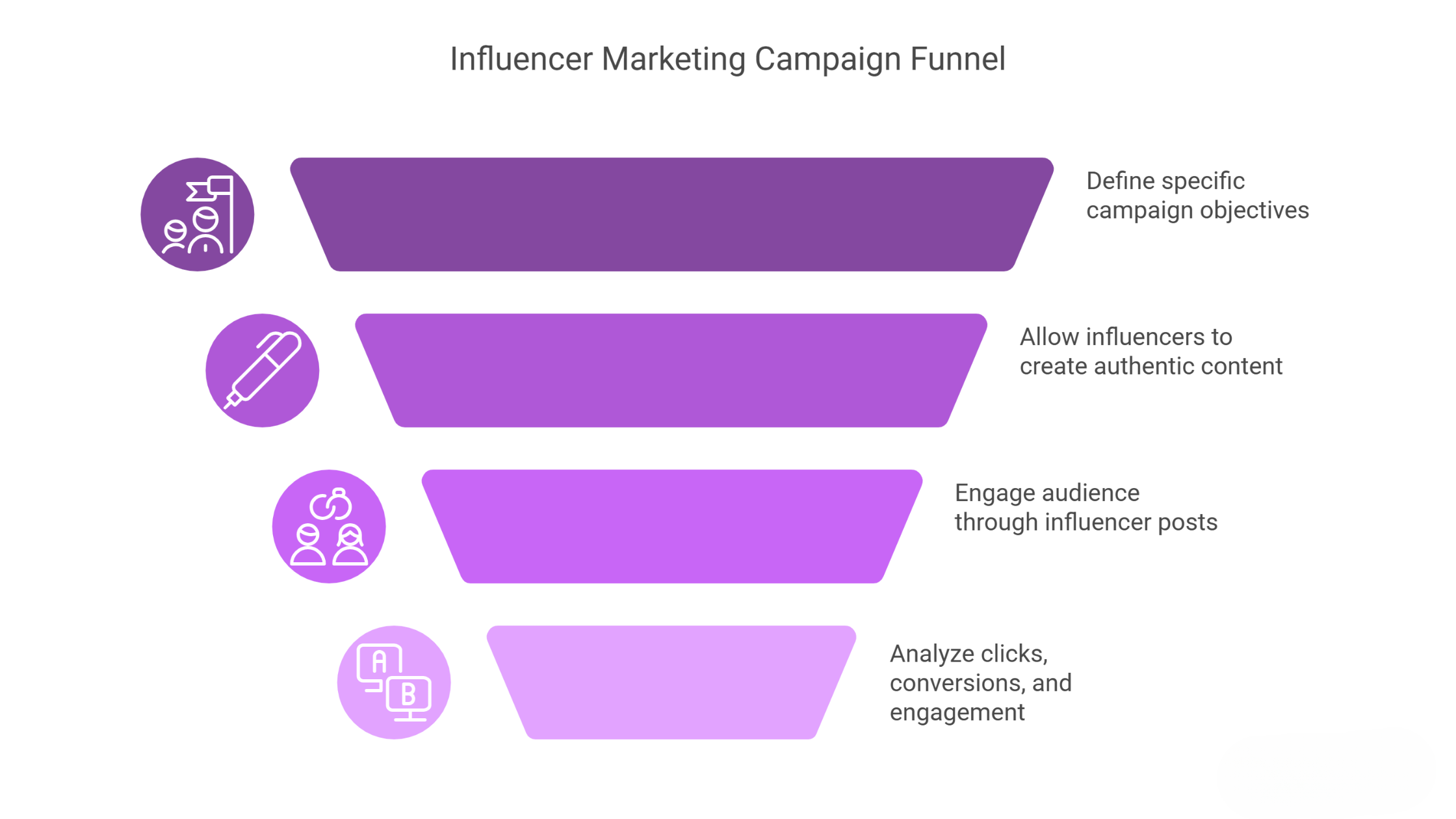 Goal: Achieve higher brand trust and broader awareness through influencer endorsement.
Goal: Achieve higher brand trust and broader awareness through influencer endorsement.
People trust personal recommendations more than standard advertising because they find them trustworthy. Businesses team up with influencers to advertise their products across more extensive clientele.
Example: Daniel Wellington’s Influencer Strategy
Daniel Wellington distributed complimentary watches to social media influencers, who then published #DanielWellington hashtag content. The branding initiative made this brand extremely popular to a broad audience.
How to Run an Influencer Marketing Campaign
- Select influencers who possess an audience profile similar to your core consumer base.
- Your campaign should have specific goals. Set sales engagement, or brand recognition, as the priority and work towards creating a campaign to achieve that goal.
- Permit influencers to provide genuine and honest opinions about your brand through their content.
- Measure clicks, conversions, and engagement to see what works best.
Best Platforms: Instagram, YouTube, TikTok
5. Product Launch Campaigns
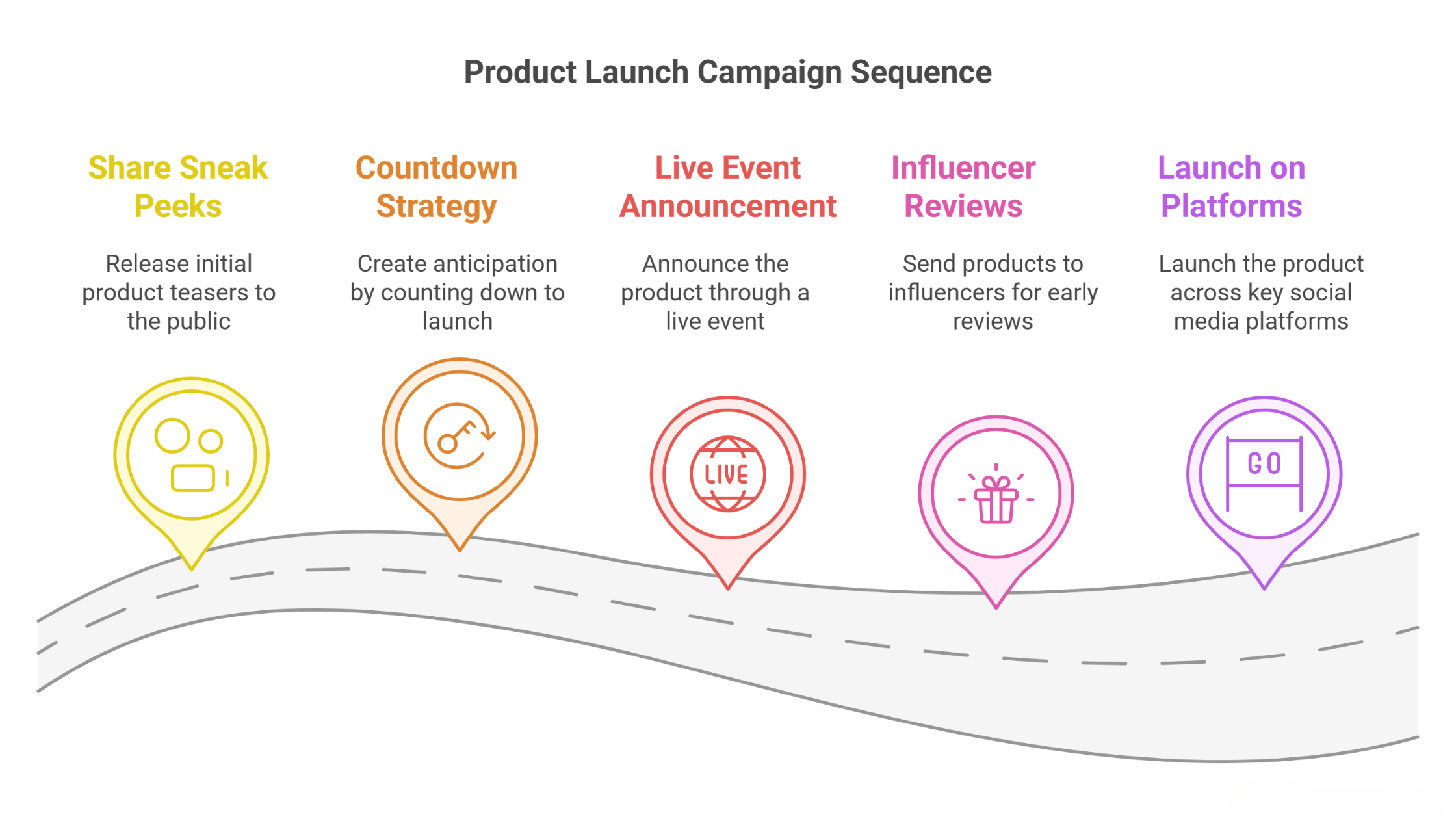 Goal: Generate buzz for a new product or service.
Goal: Generate buzz for a new product or service.
Product launch campaigns are designed when your product is ready to be released on the market. These campaigns help start the buzz of your product and attract consumers. Your marketing efforts reveal your new product to customers while motivating them to become purchasing customers.
Example: Apple’s iPhone Launch Events
The official television ads for the new Apple iPhones begin with promotional videos, press releases, and influencer endorsements before they are officially launched. Large-scale sales growth results from this process, which builds suspense.
How to Run a Product Launch Campaign
- Share sneak peeks of the product before launch.
- A countdown strategy helps to create anticipation through the measurement of time until launch events.
- A live event announcement provides the best approach for product introduction through video or webinar broadcasts.
- Send products to influencers for early reviews.
Best Platforms: Instagram, YouTube, Twitter, Facebook
6. Customer Retention Campaigns
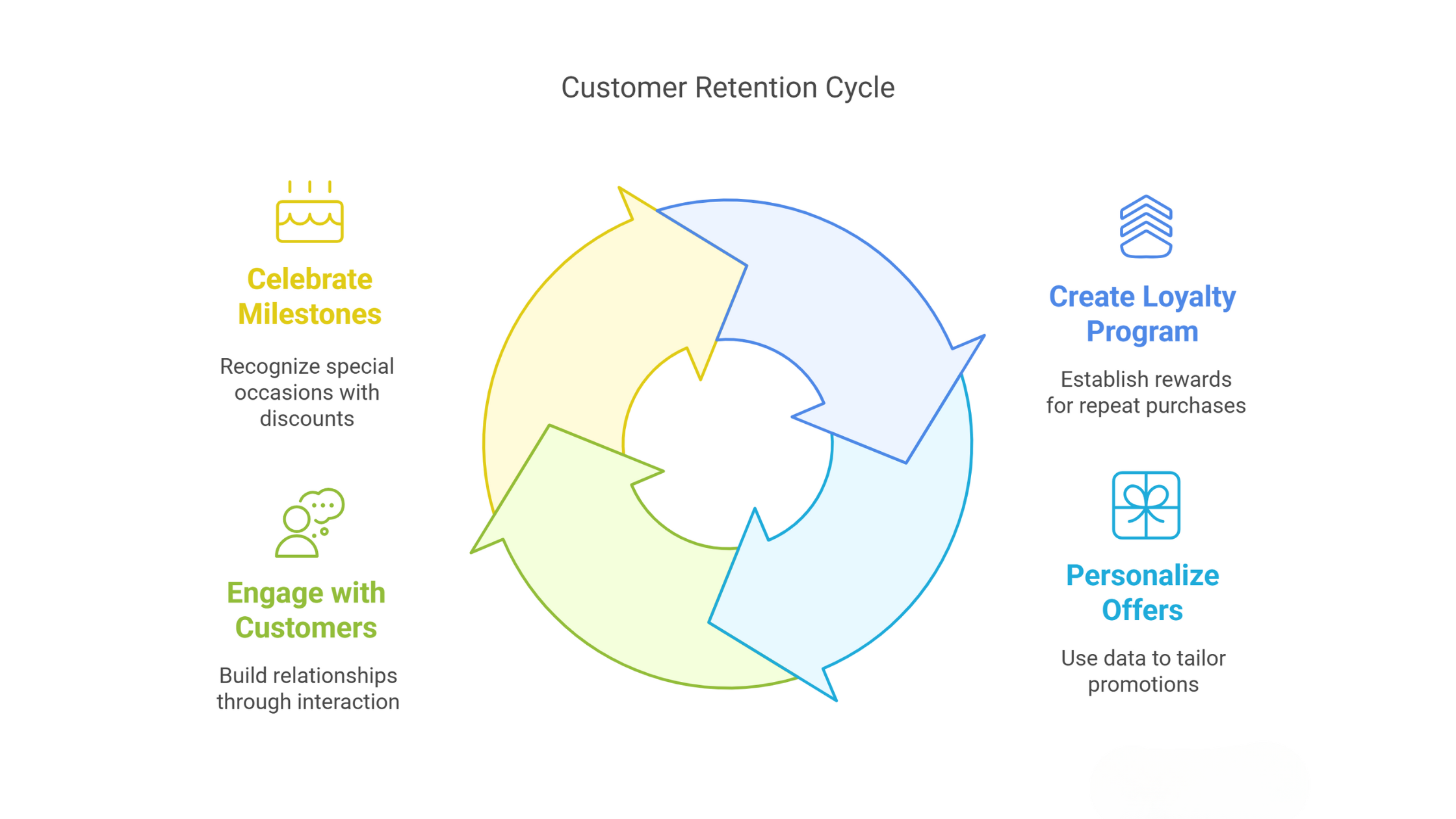 Goal: Maintain client satisfaction and promote additional purchases from current customers.
Goal: Maintain client satisfaction and promote additional purchases from current customers.
A company should keep its existing customers happy. Acquiring new clients costs more than retaining existing ones. Customer retention campaigns help establish loyalty by offering specific awards and unique advantages for customers.
Example: Sephora’s Beauty Insider Program
Through its loyalty program, Sephora enables regular clients to access unique product ranges, get sales before anyone else, and take advantage of discount offers. This keeps people coming back.
How to Run a Customer Retention Campaign
- Create a loyalty program – Offer points or rewards for repeat purchases.
- Ship custom deals using personal customer data to find suitable promotional offers.
- Engage with customers – Respond to comments and messages to build relationships.
- Celebrate customer anniversaries, which include birthday discounts and unique presents for loyal customers.
Best Platforms: Email, Instagram, Facebook
7. Crisis Management Campaigns
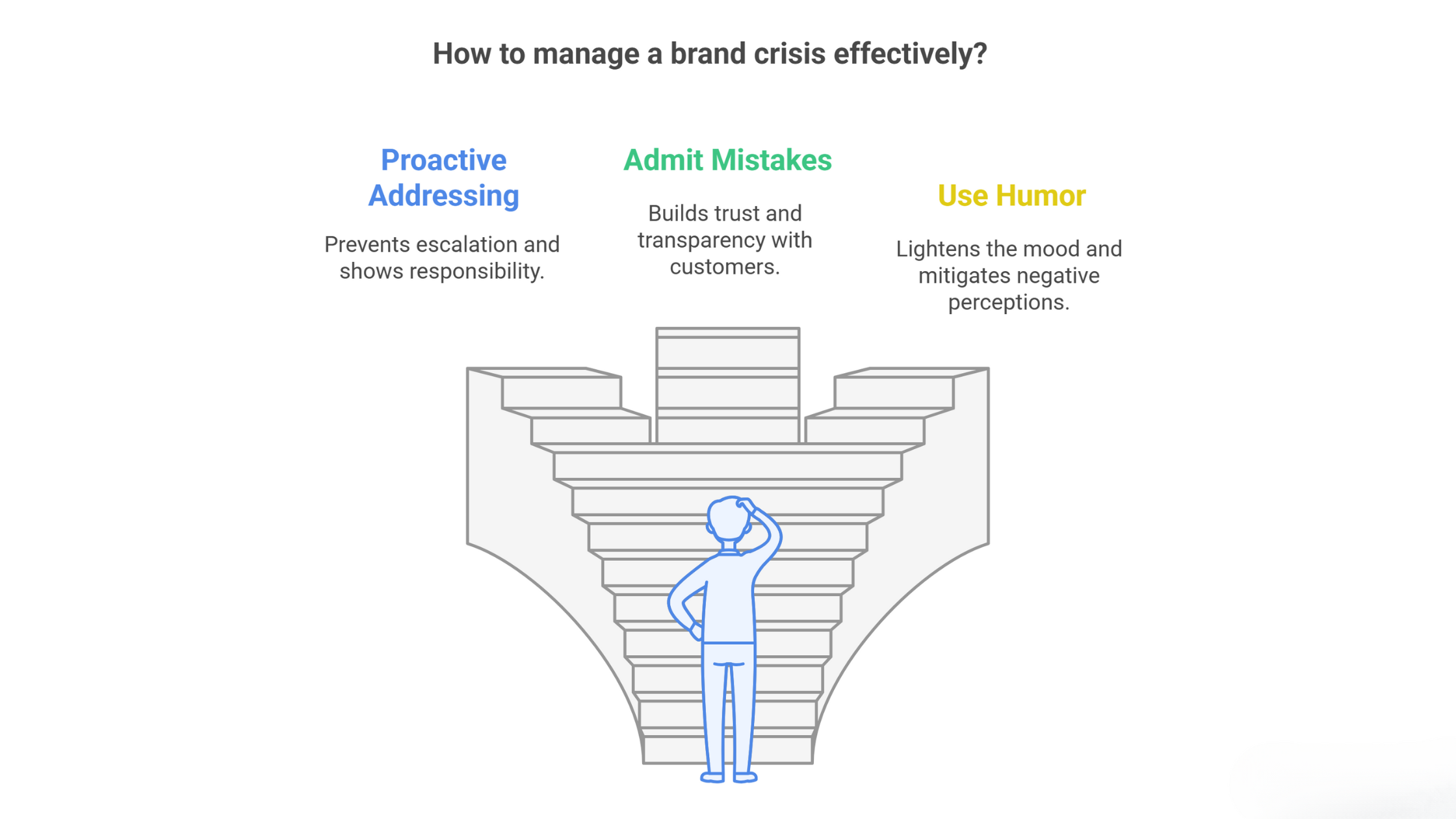 Goal: Protect brand reputation during adverse situations.
Goal: Protect brand reputation during adverse situations.
Most Agile businesses encounter critical situations, including product recalls and unfavorable media coverage. A crisis management campaign functions to control public perceptions while maintaining public trust in affected organizations.
Example: KFC’s “FCK” Apology Campaign
The UK chicken crisis led KFC to create a memorable advertisement that used an altered logo design to write “FCK” as an apology to their customers. Using humor as an approach softened the adverse reactions toward the brand’s difficulties.
How to Run a Crisis Management Campaign
- Address the issue before it worsens.
- Admit mistakes and explain solutions.
- Make deliberate use of humor only when suitable situations permit to reduce tension.
- When interacting with customers, ensure to provide answers to reassure them.
Best Platforms: Twitter, Facebook, LinkedIn
8. Social Responsibility Campaigns
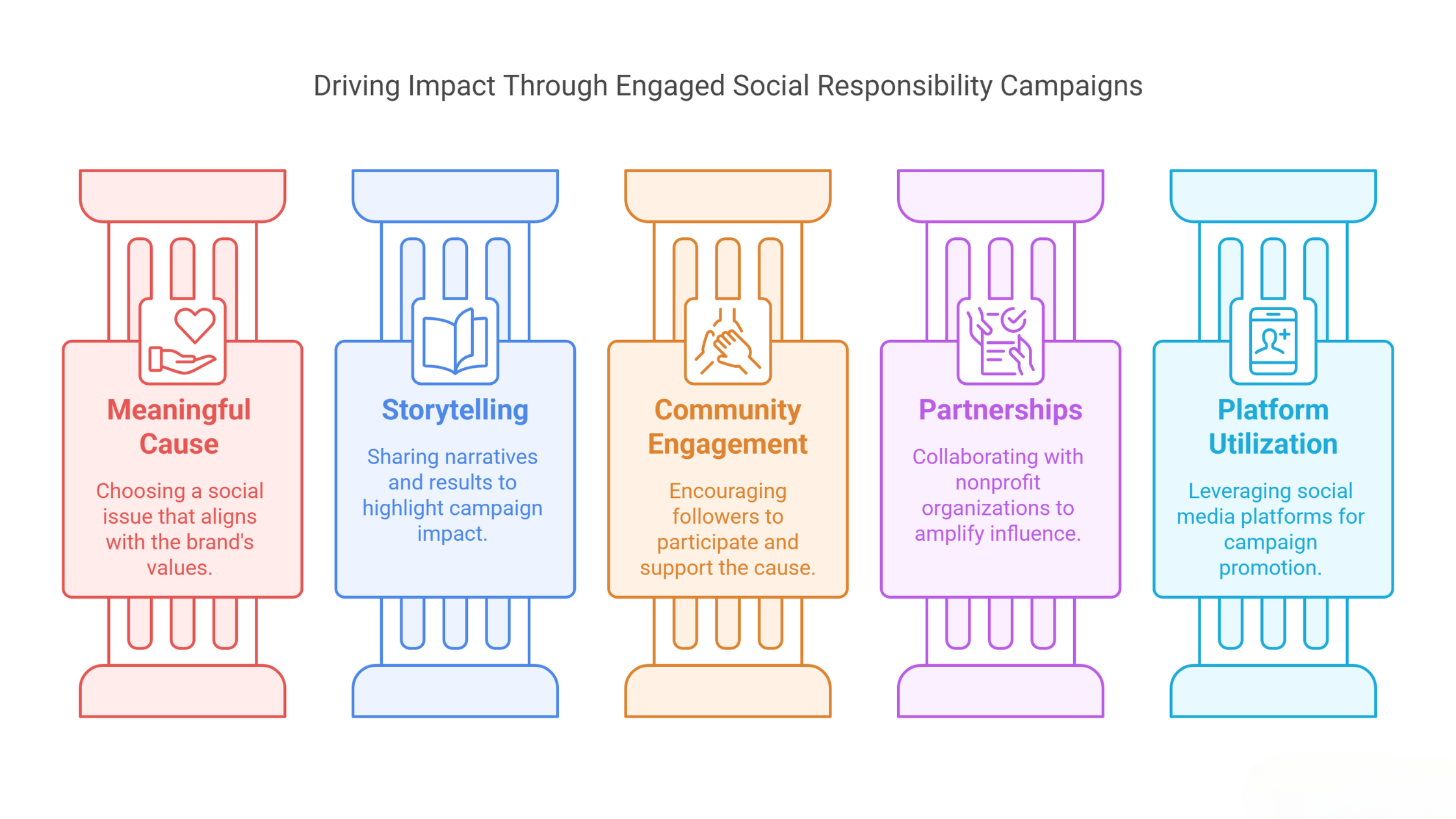 Goal: Display active dedication toward major social and environmental concerns to establish your concerns.
Goal: Display active dedication toward major social and environmental concerns to establish your concerns.
Customers today favor purchasing products from brands that defend particular values. Social responsibility campaigns let organizations demonstrate their dedication to specific causes.
Example: Patagonia’s Environmental Initiatives
Patagonia donates a percentage of its profits to environmental causes. They actively use social media to promote sustainability.
How to Run a Social Responsibility Campaign
- Support a meaningful cause. Pick a social issue that aligns with your brand.
- Share stories and results of your efforts.
- You should motivate your followers to join the cause by asking them to participate or give their support.
- Your organization should team up with nonprofit entities to extend its social influence.
Best Platforms: Instagram, Twitter, LinkedIn
Conclusion
Running social media marketing campaigns serves as a strong business growth tool. Every goal of your business can be achieved through the proper social media marketing campaign, which aligns with your strategic objectives.
Agile businesses do not need to use complicated methods. They can choose a campaign that matches their objectives and perform tests followed by adjustments throughout the process. Start experimenting with different social media marketing campaigns, track your results, and refine your strategies for long-term success.
FAQs
1. What are social media marketing campaigns?
Social media marketing campaigns are defined plans to market brands or sell products and services across social media networking sites. Agile businesses use these strategies to connect with specific clients imp, improve participant interaction, and boost revenue generation. Companies create social media marketing campaigns through promotional advertising and joint ventures between influencers, marketing competitions, and multiple other tactics.
2. How can I measure the success of my social media marketing campaign?
Business success must demonstrate three key performance indicators (KPIs): engagement rates, click-through rates (CTR), and conversions and return on investment (ROI). Tracking tools like Google Analytics, Facebook Insights, and Instagram Insights provide real-time data on campaign performance.
3. Which platforms are best for social media marketing campaigns?
Your choice of the best platform needs to match the audience you wish to target. Facebook is great for ads and lead generation, Instagram works best for visual storytelling, LinkedIn is ideal for B2B campaigns, TikTok is adequate for younger audiences, and Twitter is useful for real-time engagement.
4. How long should a social media marketing campaign run?
The duration of a campaign depends on its goal. Short-term campaigns (1-4 weeks) work well for product launches or promotions. Long-term campaigns (3-6 months) are better for brand awareness and engagement. The key is to test and adjust based on performance metrics, ensuring continuous optimization of your social media marketing campaigns.
5. What is the cost of running a social media marketing campaign?
Costs vary depending on the platform, audience targeting, and campaign type. Organic campaigns (without ads) are cost-effective but take time to gain traction. Paid campaigns require a budget for ads and influencer collaborations. Facebook and Instagram ads can start as low as $5 per day, while influencer marketing costs depend on the influencer’s reach and engagement.

Bhavna is an Agile Coach and Consultant with over a decade of experience in advisory, corporate finance, IT assurance, and operations at Big 4 and within the industry in the UK and India. She has recently been the CEO of a start-up where she implemented agile practices within HR, Marketing, and Product teams.
She is also a SAFe® Practice Consultant (SPC) and authorized instructor for ICAgile Agility in HR (ICP-AHR), Agility in Marketing (ICP-MKG), and Business Agility Foundations (ICP – BAF) training courses. She provides training for agile transformation to corporate, public, and private batches, as well as consulting for enterprise agile transformation.



